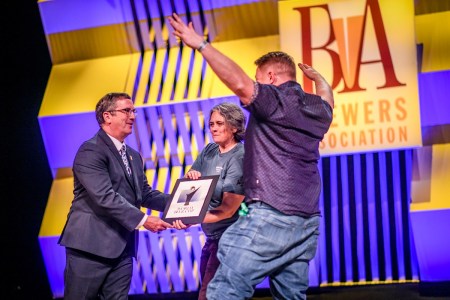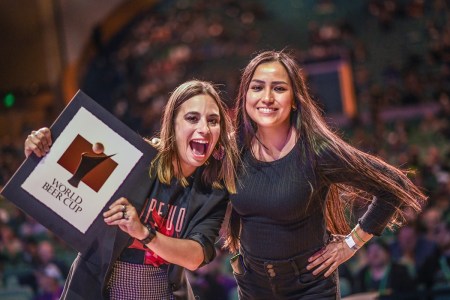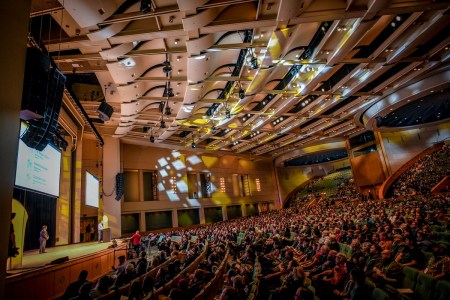
Australian breweries have repeatedly tasted success at the largest and most prestigious professional beer competition in the world and those wanting to follow suit can register their 2023 World Beer Cup entries from November 1 until November 14.
Following the likes of four gold medals by different James Squire beers and podium finishes for Nail Brewing and BentSpoke Brewing over the years, this year’s competition saw locally-based breweries Bucketty’s, Stone & Wood and Urban Alley all fly the Australian flag. That most recent event attracted 10,542 entries from 2,493 breweries representing 57 different countries.
Previously a bi-annual event*, the Brewers Association of America’s 2023 World Beer Cup will be the first of the newly established annualised cycle. (*COVID did cause a four-year hiatus after the 2018 awards.)
From November 1 you can register for the 2023 World Beer Cup here. Winners will be announced on May 10 at the Music City Center in Nashville, Tennessee at the conclusion of the Brewers Association’s annual Craft Brewers Conference & BrewExpo America.
Australian brewers will be able to send entries to the official consolidation hub in Victoria where beers will be palletised and air-freighted to the USA at the Brewers Association’s expense. The Brewers Association will handle all customs clearance and paperwork and maintain cold-storage throughout the journey.

For Beer & Brewer, the Brewer’s Association’s Lotte Peplow, who is their American Craft Beer Ambassador for Europe, sat down with Chris Williams (pictured), the newly appointed World Beer Cup competition director, to explore what makes the competition so special.
Why is it moving to an annual competition?
“It’s all about answering demand. We were getting a myriad of enquires from breweries all around the world asking ‘when does registration open’ and we would have to tell them ‘it’s only every other year’. By moving to annual we’re looking to meet this demand and we’re excited to see how it can grow and move forward. Organising a bi-annual competition was easier from an operational perspective but going annual helps keep the competition at the forefront of people’s minds and they’re less inclined to forget or miss deadlines. It’s exciting to see where it will go from here.”
There are many beer competitions around the world, but what’s so special about this one and why should brewers enter?
“By being the largest competition in the world it’s also the most competitive which means taking home a medal or an award shows that, globally, your brewery is doing something right and you’re making world-class beer. Yes, it’s difficult to win because it is so competitive, but success shows how amazing your brewery is at making beer and that’s highly valuable. It’s interesting to see breweries from all around the world competing with international or regionally-focused styles which may lead to a brewery from a far-flung corner of the world winning an unexpected category, for example, in 2022 a Columbian brewery won gold in the specialty saison category and a Mexican brewery medalled in English ale.”

Brewers often say the quality of the feedback is reason alone to enter the World Beer Cup. Please explain how feedback works?
“Comprehensive feedback is another highly valuable aspect of the World Beer Cup. Every beer goes through multiple rounds of judging and in the first round every judge (usually two to four of them) fills out an evaluation card focusing on aroma, appearance, flavour, balance et cetera and gives comments, stylistic descriptions and a summary of how the beer stood up to other beers in the flight. This means that in a category with hundreds of entries every brewer will know how their beer performed and this is highly valuable feedback for the brewer. In addition to feedback cards, brewers also get a summary of how far their beer advanced through the rounds. For example, in a large category with five rounds a brewer will be told how far their beer progressed and brewers find this very worthwhile information.”
How do you choose the judges?
“We have a very large judging panel of about 800 names and we rotate through every few years between World Beer Cup and Great American Beer Festival (GABF, held in Denver, Colorado every Autumn). We aim for 12 to 15 per cent of new judges every year to keep the panel fresh and bring in new perspectives, new palates and to ensure we reach the most highly acclaimed judges in the world. Of course, not all the 800 judges are active and we need between 250 to 300 for every World Beer Cup. In my new role as competition director, I’m responsible for selecting the judges from a list of internationally recognised brewers, sensory experts, suppliers, writers and consultants and they’re selected on the basis of formal sensory training, experience evaluating beers on flavour panels or competitions, judging demeanour, knowledge of beer styles and the brewing process and industry and peer recognition.
In 2022 judges came from 28 countries and 32 per cent were from outside the US, which was down slightly on previous years due to travel restrictions caused by the pandemic. Pre-pandemic we saw the number of judge countries rising and I’m pushing for that to increase once more to about 50 to 60 per cent over the next few years because international perspective and palates of our judges is invaluable, especially country judges from where a beer style originated.
My biggest challenge is having the right number of judges from around the world. For the last two years it has been difficult for people to travel but that is changing now.”
How many countries enter and how do you reach every corner of the brewing world?
“Pre-pandemic we had an impressive number of 65 countries but it dropped a bit in 2022 due to lingering pandemic restrictions or logistics being difficult, but we’re hoping to get up to 65 countries and maybe expand into the 70s in due course. We’ve got a great plan for targeting different markets and we’re excited to bring that count up. We’re re-doubling our efforts with marketing campaigns, social media, partnerships with international publications, activities undertaken by our export development program and more to get the message out there.”

What criteria is used for judging?
“World Beer Cup is judged according to Brewers Association style guidelines. These are beer style descriptions which are used as a reference point for brewers and beer competition organisers. They are reviewed and revised annually and celebrate the diversity of beer around the world. I work with the Brewers Association’s technical committee to decide on the competition guidelines. We review after every competition cycle and adjust where necessary, for example, we may have a category with very few entrants and decide to roll it into something else. Some styles make it into the competition guidelines based on interest and popularity and some on industry trends.”
Will you be doing anything differently in your new role?
“Not right away. I want to ensure we’re operating the best we can and at the moment we have a great competition model in the way it’s been structured and operationally it works superbly. However, I know there are always areas we can improve on and that’s probably my biggest goal over the next one to two cycles of World Beer Cup and GABF. I’ll be keeping an eye on what can be done to improve and enhance the competition.
On-line and digital judging is an area we’re looking to progress. We’ve been working towards it but progress slowed during the pandemic and now the intention is to fully convert to digital judging by World Beer Cup 2024. We don’t want to move too fast, especially with the size and scale of the competition – everybody needs to be ready, but it’ll be exciting when we do!
In addition to organising and selecting the judges, I also build out the competition schedule which is a bit like a giant jigsaw puzzle in terms of what beer is judged by who and when, and I also oversee the operations team. Our cellar manager Mike Aronson, helps secure a team of volunteers who receive the beers, unpackage and sort them into 103 individual judging categories and the assistant competition manager, Kristine Latham, helps secure our competition team of stewards and table captains responsible for getting the beer to the judges’ tables. There are between 10,000 and 11,000 entries and over 60,000 individual bottles or cans which must all be sorted by hand and the entire sorting process takes over 6,000 volunteer hours. Organisation at sorting is key to ensuring all entries reach the judges at the competition. The competition has continued to grow by roughly 10 per cent every competition cycle making organisation even more challenging.”
What were you doing before your new role?
“I’ve been with the Brewers Association for the last 13 years and started as an intern. Within two years I moved into the event manager side and my previous role for the last five years was as senior event manager. This allowed me to interact with breweries by helping them manage their entries into the World Beer Cup and GABF. I have a lot of experience working with breweries so it was an easy transition to step into the competition director role and I felt I was uniquely suited for it.”
For more information visit worldbeercup.org
